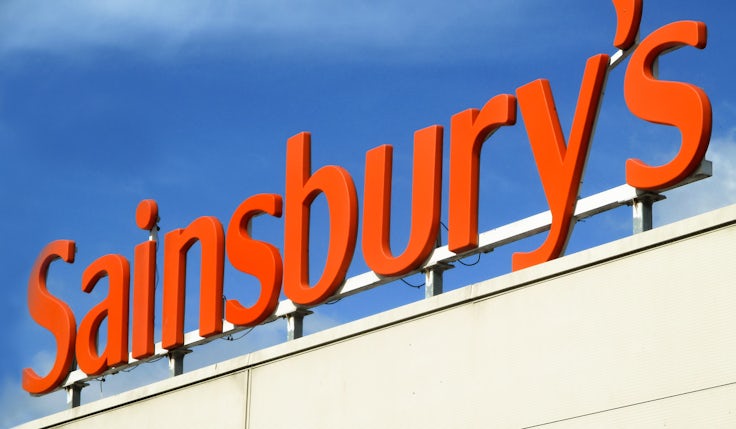Sainsbury’s dual focus on premium product and price powers its largest market share gain in a decade
The supermarket chain’s strategy to “go after both” quality and the cheapest has helped it increase market share by 0.4 percentage points.
 Sainsbury’s has recorded its largest market share increase in more than a decade, thanks to its dual focus on product and price.
Sainsbury’s has recorded its largest market share increase in more than a decade, thanks to its dual focus on product and price.
The supermarket’s premium Taste the Difference own-brand range performed particularly well in the 12 weeks to 26 November, with sales up by 23% year on year, according to data from Kantar. That contributed to a 10.2% increase in overall sales over the period, leading to a 0.4 percentage point boost in market share to 15.6%.
Sainsbury’s was the fastest growing of the traditional ‘big four’ supermarkets and fourth overall behind Lidl (up 14.2%), Ocado (12.1%) and Aldi (11.1%).
By comparison, Tesco increased sales over the period by 8.6%, Asda by 2.6% and Morrisons by 3.7%.
Kantar’s head of retail and consumer insight Fraser McKevitt says Sainsbury’s success is due to both consumers trading up to premium products in the run-up to Christmas – its Taste the Difference range features prominently in its festive campaign – but also its year-round focus on value ranges and its Aldi Price Match.
“Sainsbury’s seems to be going after both quality and the cheapest at the same time, which I think is important for Sainsbury’s because if you speak to most consumers… they would have some thoughts about whether it’s pricier than some of its mainstream rivals,” he tells Marketing Week.
Sainsbury’s has been aggressively marketing its Aldi Price Match over the year to fend off competition from the discounters.
According to its latest half-year results, grocery sales increased by 10.1% in the six months to 16 September against the previous year, which it attributed to a further £118m investment in lowering prices. As a result, it said more customers are now using Sainsbury’s for the “full basket” shop, which it said at the time had led to it “gaining volumes from every supermarket including limited-choice [Aldi and Lidl] competitors”.
Sainsbury’s seems to be going after both quality and the cheapest at the same time.
Fraser, McKevitt, Kantar
The success of Sainsbury’s Taste the Difference range over the past 12 weeks is symptomatic of a wider trend toward supermarkets’ premium own brands. These premium lines in particular are doing “incredibly well” according to Kantar, with sales up by 15.4% year on year, with wine, chilled ready meals and fresh beef leading the charge.
But with the level of discounts rising, “brands have benefited from the boost in offers and have now edged ahead of their own-label counterparts, growing sales by 6.5% versus 6.4% for retailer lines,” according to McKevitt.
Spending on offers reached its highest level in over two years in the most recent month, hitting 28.4%.
McKevitt says: “Come Christmas time people do tend to gravitate towards the more full-service retailers or traditional retailers… particularly Sainsbury’s, also Tesco, and then also those more premium retailers that have a strong food emphasis.”
McKevitt says the discount chains are particularly likely to benefit this year due to the ongoing cost of living crisis and food inflation. “People will trade up in December but we will see record sales for Lidl and Aldi at Christmas time, and they do premium ranges too,” he adds.
Sainsbury’s focus on value pays off as it takes market share from discounters
The only other supermarket chain to match Sainsbury’s increase in market share over the period was Lidl, which also rose 0.4 percentage points to 7.8% of the total share. Fellow discounter Aldi recorded a rise in market share of 0.3 percentage points to 9.6%, as did Tesco, which increased its share to 27.5% compared to 27.2% last year.
The share of all other supermarkets declined compared to last year. Asda’s market share dropped 0.6 percentage points to 13.4% and Morrisons’ declined by 0.3 percentage points to 8.7%.








Comments